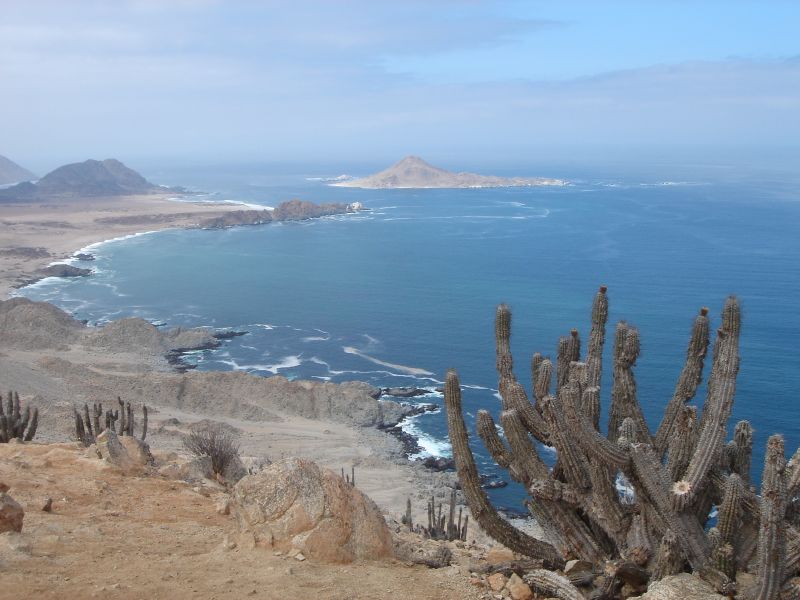- Pan de Azúcar National Park
:"For other uses, see
Pan de Azúcar "Infobox_protected_area | name = Pan de Azúcar National Park
iucn_category = II

caption =
locator_x =
locator_y =
location =Antofagasta Region -Atacama Region ,Chile
nearest_city = Chañaral
lat_degrees =
lat_minutes =
lat_seconds =
lat_direction =
long_degrees =
long_minutes =
long_seconds =
long_direction =
area = 438 km²
established = 1985
visitation_num =
visitation_year =
governing_body =Corporación Nacional Forestal Pan de Azúcar National Park is a national park of
Chile . The park straddles the border between theAntofagasta Region and theAtacama Region . Its name, "Parque Nacional Pan de Azúcar", means "sugar loaf".Geography
The park is located 30 km north of Chañaral and 180 km north of Copiapó. It was founded in 1985 and has an extension of 437.54 km² (including 1.1 km² of insular terrain).Es icon [http://www.conama.cl/chilecanada/1288/articles-29563_doc_12.doc Supreme Decree 527, 1985, Ministry of National Assets of Chile] ] It is importance derives from the relative diversity of species.
The park can be reached most conveniently form Chañaral. A small gravel road leads along the ocean to the park, passing "Playa Amarilla" (yellow beach) and "Playa Blanca" (white beach) on the way. Many cactus species can be observed along the road. Some people make the tour by bicycle and spend the night at "Caleta Pan de Azúcar" or camp on the mountains (the night can get uncomfortably cold because of the mist).
Isla Pan de Azúcar
Isla Pan de Azúcar is located 24 km farther.
Humboldt Penguin s breed on this island. The island can be reached by boat from the mainland but passengers are not allowed to leave the boat.Caleta Pan de Azúcar
Caleta Pan de Azúcar (Pan de Azúcar Cove) is a small fisher settlement who cater now to the local tourism. Formerly copper was worked here and freighted by boat. Divers can still explore parts of the wharf, the loading crane and other things below the water. From here the look-out point of "Mirador" 8 km farther can be reached. On the mountain slopes nearby an extraordinary fauna can be observed which stays alive thanks to the coastal mist.
North of Caleta Pan de Azúcar
From the cove northward there is a gravel road which connects to the
Pan-American Highway . Along the way there are numerous interesting geological formations.Biology
Pan de Azúcar NP is divided into two ecosystems: the coastal desert of Taltal and the steppe desert of the
Sierra Vicuña Mackenna . The absence of rain is compensated by coastal mist, which is known locally asCamanchaca .There are more than 20 cactus species in the area, mainly of the genus
Copiapoa .The
Guanaco is the main mammal found in the park. Other mammals include Culpeo Fox, Chilla Fox andEuropean Hare . The shoreline area is home tomarine mammal s, as are theMarine Otter and theSouth American Sea Lion . Among the birds is the Humboldt Penguin. Also reptile species of the generaTropidurus andCallopistes inhabit the park.References
Wikimedia Foundation. 2010.
